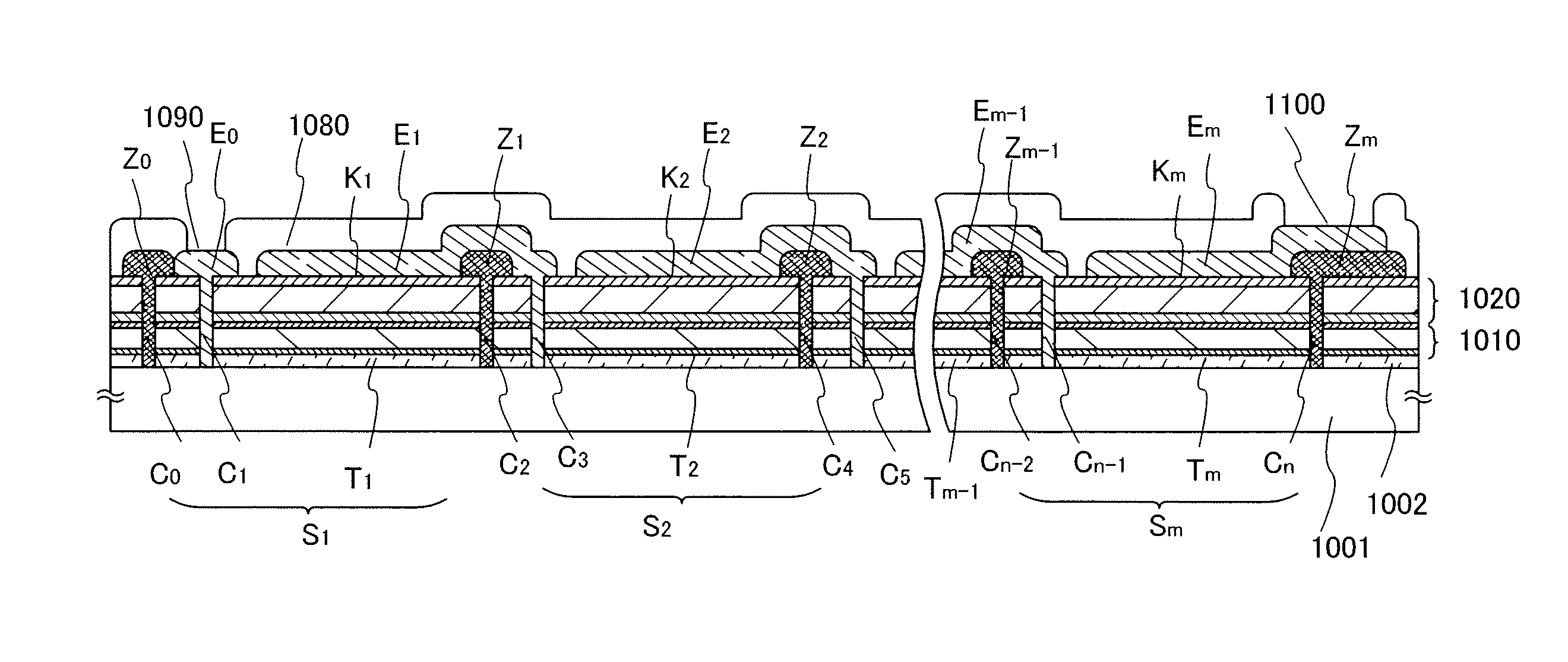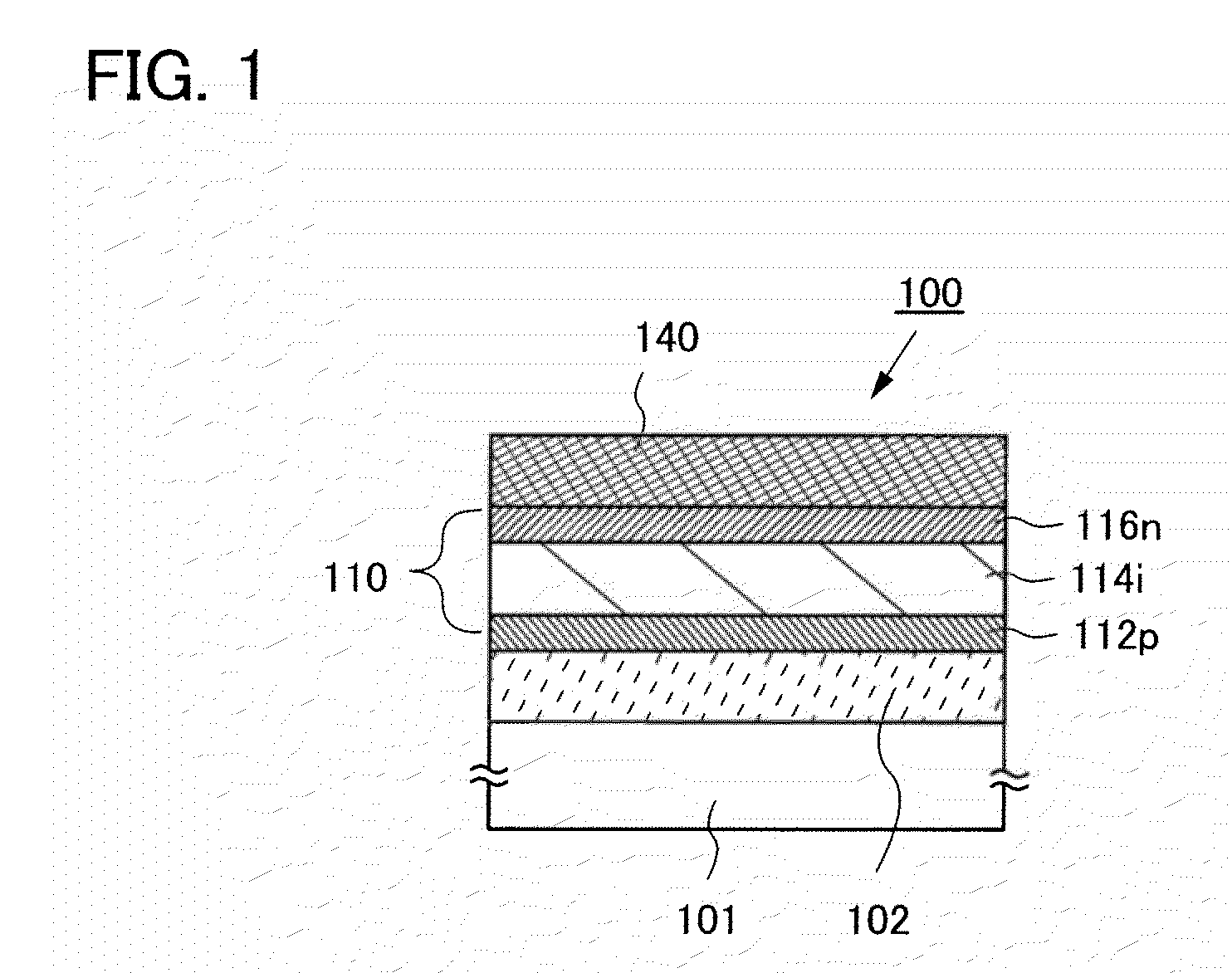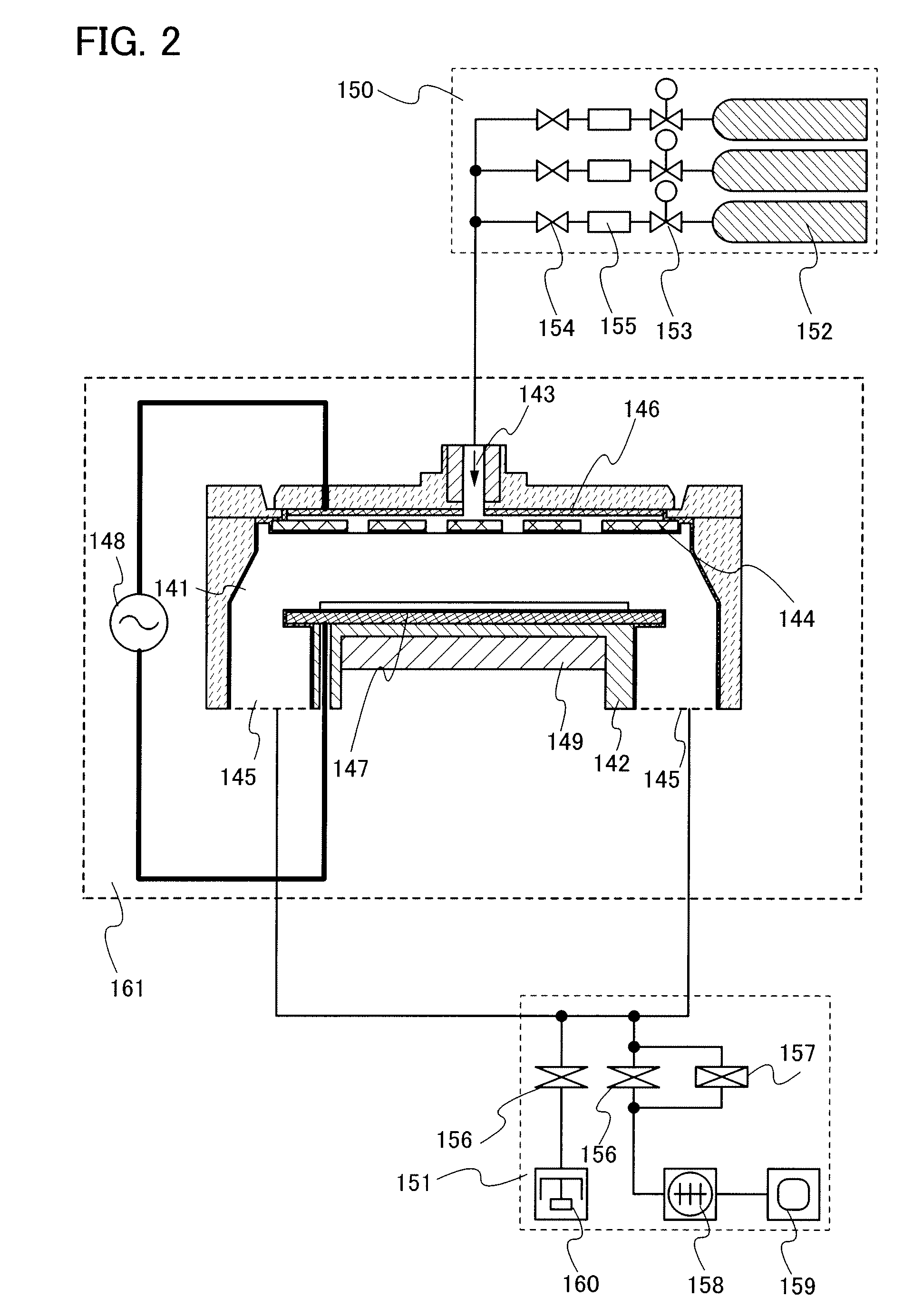Photoelectric conversion device and method for manufacturing the same
a technology of photoelectric conversion device and manufacturing method, which is applied in the field of photoelectric conversion device and a manufacturing method for the same, can solve the problems of non-single-crystal silicon thin films such as thin microcrystalline silicon films, which have defects serving as carrier traps, and the supply of silicon is very short, so as to improve the photoelectric conversion efficiency of a photoelectric conversion device having a non-single-crystal semiconductor layer. the effect of defects
- Summary
- Abstract
- Description
- Claims
- Application Information
AI Technical Summary
Benefits of technology
Problems solved by technology
Method used
Image
Examples
embodiment 1
[0041]FIG. 1 illustrates an example of a schematic cross-sectional view of a photoelectric conversion device 100 of this embodiment.
[0042]The photoelectric conversion device 100 illustrated in FIG. 1 has a structure in which a unit cell 110 is interposed between a first electrode 102 and a second electrode 140 which are provided over a substrate 101. In the unit cell 110, a non-single-crystal semiconductor layer 114i is provided between a first impurity semiconductor layer 112p and a second impurity semiconductor layer 116n, and the unit cell 110 includes at least one semiconductor junction. As the semiconductor junction, a p-i-n junction is typically given.
[0043]The non-single-crystal semiconductor layer 114i is a semiconductor layer in which the nitrogen concentration, the oxygen concentration, and the carbon concentration are controlled. In the non-single-crystal semiconductor layer 114i, the nitrogen concentration is within a predetermined range and the oxygen concentration and ...
embodiment 2
[0105]In this embodiment, a photoelectric conversion device having a structure different from the structure described in the above embodiment is described. In specific, an example in which an amorphous semiconductor layer is formed between the first impurity semiconductor layer 112p and the non-single-crystal semiconductor layer 114i is described.
[0106]In the photoelectric conversion device illustrated in FIG. 6, the first electrode 102, the first impurity semiconductor layer 112p, an amorphous semiconductor layer 113, the non-single-crystal semiconductor layer 114i, the second impurity semiconductor layer 116n, and the second electrode 140 are stacked in this order from the first substrate 101 side. In this embodiment, the amorphous semiconductor layer 113 is provided between the first impurity semiconductor layer 112p and the non-single-crystal semiconductor layer 114i.
[0107]By providing the amorphous semiconductor layer 113 between the first impurity semiconductor layer 112p and...
embodiment 3
[0111]In this embodiment, a photoelectric conversion device having a structure different from the structures described in the above embodiments is described. In specific, an example in which the number of unit cells to be stacked is different from that in the photoelectric conversion device illustrated in FIG. 1 is described.
[0112]FIG. 7 is a tandem photoelectric conversion device 200 in which two unit cells are stacked. The photoelectric conversion device 200 includes the unit cell 110 formed over the substrate 101 provided with the first electrode 102, a unit cell 220 formed over the unit cell 110, and a second electrode 140 formed over the unit cell 220.
[0113]The unit cell 110 has a structure in which the first impurity semiconductor layer 112p, the non-single-crystal semiconductor layer 114i, and the second impurity semiconductor layer 116n are stacked in this order from the first electrode 102 side. The non-single-crystal semiconductor layer 114i included in the unit cell 110 i...
PUM
 Login to View More
Login to View More Abstract
Description
Claims
Application Information
 Login to View More
Login to View More - R&D
- Intellectual Property
- Life Sciences
- Materials
- Tech Scout
- Unparalleled Data Quality
- Higher Quality Content
- 60% Fewer Hallucinations
Browse by: Latest US Patents, China's latest patents, Technical Efficacy Thesaurus, Application Domain, Technology Topic, Popular Technical Reports.
© 2025 PatSnap. All rights reserved.Legal|Privacy policy|Modern Slavery Act Transparency Statement|Sitemap|About US| Contact US: help@patsnap.com



